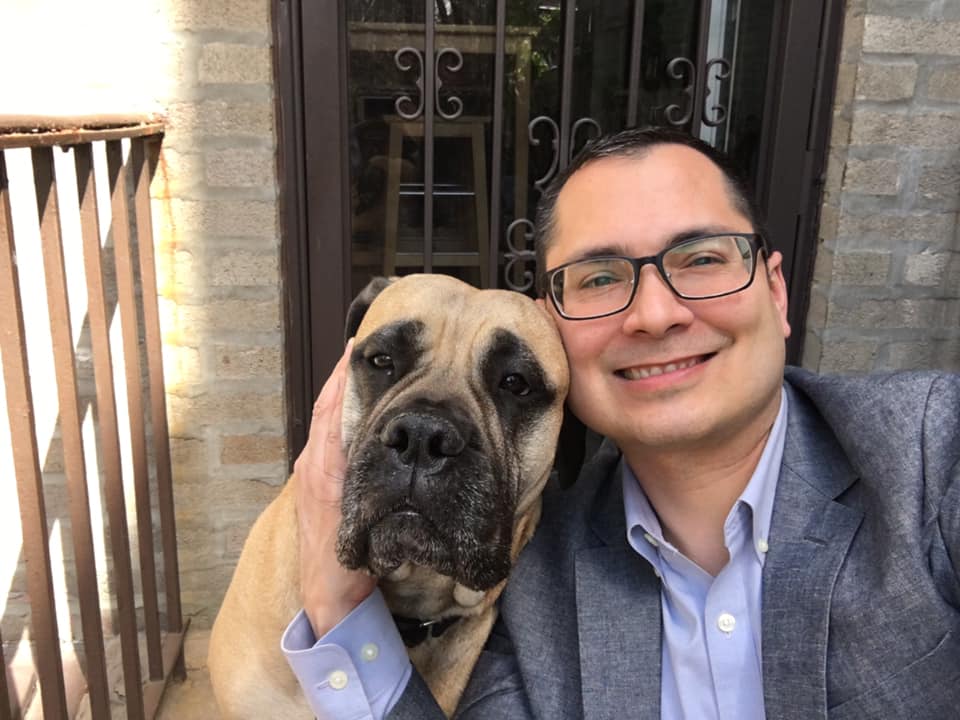Walking Hilde my dog around the block a few nights ago we pass the stoop which has become a kind of gathering place for some of the neighborhood folks in the late afternoon and evenings.
Our friend, Bill* is sitting there by himself tonight at least at this hour. Beside him on the step a twenty ounce can not even hidden by a paper bag. We stop and chat for a bit. Bill asks about Hilde whom he has affectionately nicknamed “Cupcake Stealer” for her penchant of enjoying people-food at church coffee hour—a practice, hers not his, that I do not endorse!—as he pets her head and she sniffs around for any fallen food crumbs.
I inquire of his health—he’s had some hospital visits recently and the fluctuating weather as of late has been affecting his breathing. He catches me up on one of our mutual friends who is dealing with a foot injury, temporarily staying in a place outside of the neighborhood.
Then he lowers his voice and speaks more candidly, “You know, Father, he drinks too damn much. And the hard stuff!”
I am aware. . .I’ve experienced this mutual friend of ours affected significantly by his drink. And I’m also aware of the irony of Bill calling him out on it, beer at his own side. We chat a little while longer before Hilde gets antsy and the people traffic gets heavier as workers are returning home. As we walk away Bill calls out, “I love you, Father. You know that?” And I respond, “I do. And I love you.”
_____________
For many years—almost thirty now and over five homes in three different states—I have tried to regularly practice composting. I think of it as a kind of spiritual endeavor, a reminder that in nature there is no such thing as waste. Therefore, where else in my life do I create or call something waste that simply needs to be understood otherwise, approached differently?
Currently, there are two rather good sized compost bins in the churchyard but I’ve been wanting to explore something new. So after many many years of doing considerable research on systems and models as well as various DIY ones, I splurged and ordered a pre-made worm bin, a kind of Christmas gift to myself and the churchyard garden.

The particular bin I got has different trays that allows for movement and expansion but the long and the short of it is, placed within a soil medium a community of worms will eat various household kitchen scraps and turn that into the wonders of worm castings, aka poop, which is itself a wonderful plant fertilizer. I’ve read that worms—I have adopted 250 Red Wigglers—can eat their weight (or other texts, half their weight) in scraps each day.
More importantly a benefit of worms, as Bernie Williams, a plant pest and disease specialist at the Wisconsin Department of Natural Resource explains, “They turn over, they recycle everything. And they’re providing really beneficial fungal relationships in that soil and the bacteria.” It’s that last part that I find particularly intriguing, the fungal relationships within soil along with other macro and microbiota. Worms add** so much more to this situations than simply recycling kitchen scraps’ nutrients. Worms add to the community of life in the soil!
_____________

There is a flower bed in front of the church manse filled with asters (New England Asters, Symphyotrichum novae-angliae) that through much of spring and summer look…well, not like much. But then comes autumn and they burst forth in color, filled with purple blooms with gold centers! At that time they also fill with bees! All kinds of bees, at least a half dozen different species other than the European honey bee. I’m a huge fan of bees, foreign and domestic. But right now the bees are all resting and other pollinators relocated for winter. The asters however are still here and while appearing much more drably than at their height of color in autumn, they are still beautiful.
The abundance of blooms have become an abundance of seeds that feed a variety of birds throughout winter such as the American goldfinch, black-capped chickadee, blue jay, dark-eyed junco, eastern towhee, northern cardinal, and white-breasted nuthatch among others. Even the detritus of their fallen leaves and stems provide not only a healthy mulch for the soil on which the perennial asters will rise again in the spring, but that litter itself provides a home for all sorts of little helpful organisms and other critters that we want in the garden. So just because a plant has died back or has left fallen leaves and stems don’t be too quick to “clean it up.” Neat and tidy is not always best.
_____________
More on the everything else next week.
*not his real name
**Going down the wormhole, a caveat about worms: not all worms are the same and not all environments have evolved with worms. Many of the earthworms that are widespread throughout much of North America are not necessarily native to this continent although they may have positive effects upon some soils. There is currently some excitement about the spread of an invasive species of Jumping Worms. There are also places, especially some northern forest lands, that did not evolve with native species of worms and their effect upon the chemical composition of the soil can be significant. Please be mindful of recommended ecological practices concerning worms in your area.

